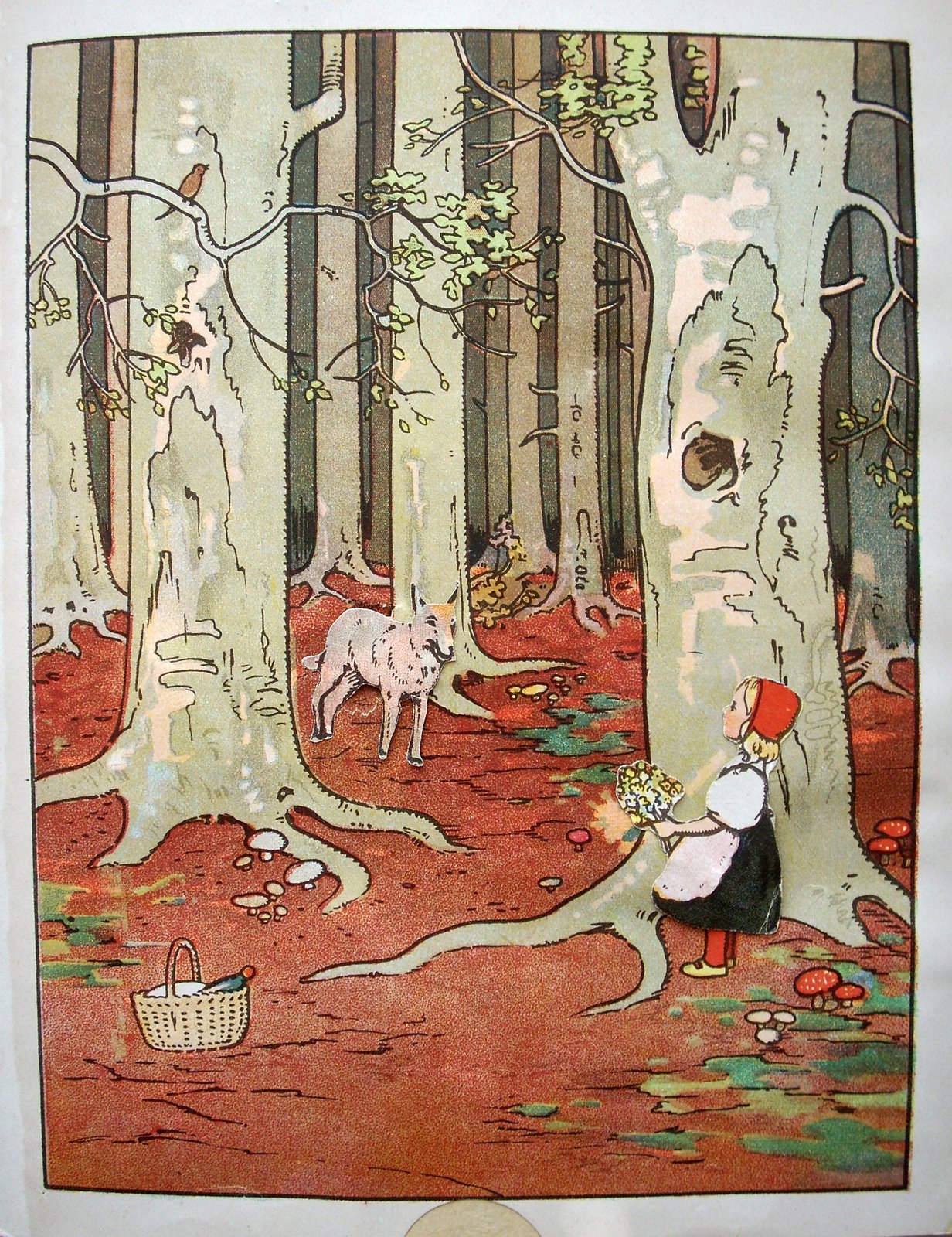Ancient Psychedelia: Alien Gods & Mushroom Goddesses
Online Book - Chapter 22, Page 431
Back to Online Book Mainpage / Next Page (Chapter 22, Page 432)
In the book The Hidden World, the authors address the connections between fairy tales and ancient Greek myth as well as the role of the “journey” in the hero legacy. Quoting from the Hidden World, again: “The Etruscans knew a version of the Odysseus myth in which the hero’s disappearance was caused by his becoming so sleepy that people had trouble finding him (Plutarch, Moralia 2.27e). As is well known, he returned to Ithaca simply by waking up. It is the common epic theme of the ‘home coming,’ which in Greek is called nostos or the return to the conscious mind, nous. This indicates that the shamanic initiatory journey was the fundamental pattern underlying Greek epic.” (2) (90g) Yakiv Orenshtain's Little Red Riding Hood c. 1927 Little Red Riding Hood The European folk tale of Little Red Riding Hood can be traced back to the 10th century and was originally titled the False Grandmother. Eventually it became Little Red Cap under brothers Grimm in the early 1800’s. One version has her portrayed “white as snow” and red above, indicative of the A. muscaria mushroom. (3) I found an interesting version of the Little Red Riding Hood book while searching online. The website stated the following, concerning this book: “A Russian-language edition of the classic European folk tale Little Red Riding Hood: Krasnaia shapochka was found which is bound in boards and only ten pages long, this appealing edition includes black-and-white lithographed drawings and four full-page chromolithographs with movable parts. Some catalogs from this period also include Ukrainian-language editions of Little Red Riding Hood. Orenshtain's 1927 catalog of the Shevchenko Scientific Society (NTSH) Bookstore lists ‘booklets for children three to five years old, with movable figures and illustrations.” The website on The Mystery of Yakiv Orenshtain's Little Red Riding Hood documents the discovery of this edition. In one image in the book, there are mushrooms on the ground next to Little Red (90g). |
Keeping with the tradition, a book was illustrated by Trina Schart Hyman which won the Caldecott Honor Medal in 1984, and in it, her version of little Red Riding Hood contains mushrooms illustrations as well. There are sixteen different versions published between 1729 and 1916 which all have illustrations and after reviewing the Little Red Riding Hood Project website, I cannot find a single one which carried the signature mushroom, although all of them have the traditional red and white amanita imagery. It was not until I found the Russian copy that I found an image from the early 1900’s. (4) I will quote directly from the early version to give the full effect of the story for modern readers. It’s short: “Once upon a time there was a sweet little girl. Everyone who saw her liked her, but most of all her grandmother, who did not know what to give the child next. Once she gave her a little cap made of red velvet. Because it suited her so well, and she wanted to wear it all the time, she came to be known as Little Red Cap.” Her mother set her out to take some cake and a bottle of wine to her grandmother. “The grandmother lived out in the woods, a half hour from the village. When Little Red Cap entered the woods, a wolf came up to her. She did not know what a wicked animal he was and was not afraid of him.” The wolf asked her where she was going. She explained to him in her innocence she was taking the food to grandma’s house. “Little Red Cap, just where does your grandmother live?” “Her house is a good quarter hour from here in the woods, under the three large oak trees. There's a hedge of hazel bushes there. You must know the place,” said Little Red Cap. “The wolf thought to himself, ‘Now that sweet young thing is a tasty bite for me. She will taste even better than the old woman. You must be sly, and you can catch them both’.” The wolf then tricked her into picking flowers for the grandmother while he went back to her cottage. “The wolf pressed the latch, and the door opened. He stepped inside, went straight to the grandmother's bed, and ate her up. Then he put on her clothes, put her cap on his head, got into her bed, and pulled the curtains shut.” When Red Cap arrived, the story continues, “she went to the bed and pulled back the curtains. Grandmother was lying there with her cap pulled down over her face and looking very strange.” (They never mention all these great details when we learn these fairy tales later on, only when we were read these tales as kids. A cap being pulled down over her face and looking strange is a telltale sign of mushroom usage.) (2) Hidden World, p. 82 (3) Hidden World, p. 127 (4) http://media.usm.edu/english/fairytales/lrrh/inventi.htm |
Go Back to Page 430